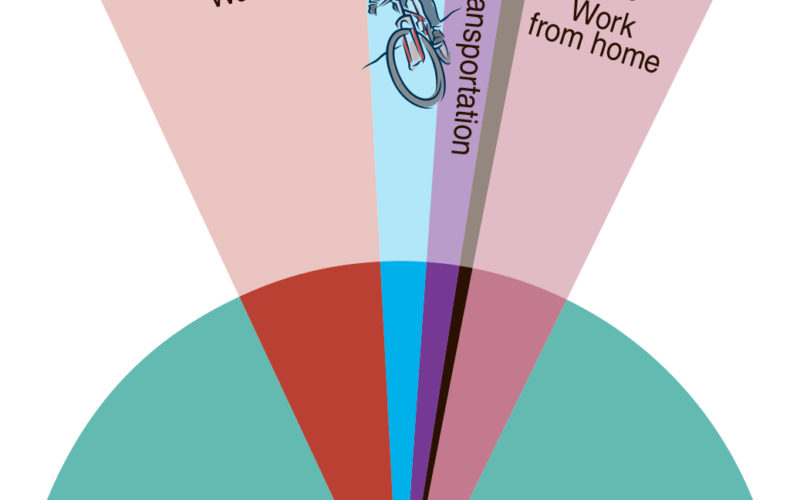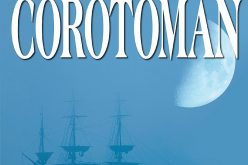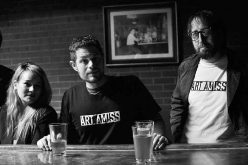City officials say a new mobility report will pave the way for residents to get around easier, whether by car, bicycle, bus or shoe leather.
A two-year study of the city’s transportation system culminated with a presentation last week to the Fayetteville City Council. The 175-page report outlines goals and tasks for improving access across all modes, takes a look at the current system and makes a series of recommendations based on public feedback and traffic analysis.
The city hired consulting firm Nelson/Nygaard in 2016 for $585,000. About $95,000 of that went toward a separate report exclusively analyzing downtown parking.
The report, using a traffic flow diagram, shows how getting 10 percent of cars off the road would relieve gridlocked streets. That means city officials need to make walking, biking and public transit more appealing to an additional 10 percent of drivers, according to the report. The consultants liken such a shift to school breaks when roads become observably less congested.
Most workers in the city travel by car, with half traveling fewer than 7 miles between home and work. About 25 percent travel fewer than 3 miles. The city has 470 miles of road, 435 miles of sidewalk, 43 miles of trail and 30 miles of on-street bikeway.
Workshops and online surveys began in spring 2016. About 1,200 participants contributed comments and answered questions pertaining to how city officials should prioritize projects and different ways of getting around. Respondents heavily favored walking and bicycling projects, maintenance on existing roads, sidewalks and trails and public transit-related improvements over parking improvements.
City Engineer Chris Brown said planners will use the study to evaluate proposed expansions to roads, trails and sidewalks and apply the findings while they update the city’s master plan this year. Department heads will present an implementation schedule to the City Council.
The consultant’s expertise was working with major cities to gather public feedback, analyzing congestion patterns and recommending where to expand travel without local politics or bias getting in the way, Brown said. The study garnered reams of technical data city staff will use, such as creating proposals to the Arkansas Department of Transportation, he said.
“They brought ideas and things that we didn’t have at our disposal,” he said. “They were able to help us see new ways of thinking about transportation and getting that feedback.”
Connecting streets to streets, trails to trails and sidewalks to sidewalks should top the list of priorities, according to the consultants. The city’s master street plan has proposed connections established in 2011. There’s also a five-year plan for trails, which results in about 3 new miles of trails a year. Sidewalks projects typically have been distributed equally among wards based on resident requests.
The study recommends coming up with five-year plans for specific stretches of road that include sidewalks, trails, street overlays and utility work all in one package.
The consultants developed a way for city officials and staff to grade potential work. It names five categories consisting of health and safety, economy, environment, equity and deliverability. Each category lists ways to achieve the five goals.
Planning staff members will score each category of a specific project, and council members and city administrators will be able to assign importance or weight to each one based on their preferences. Costs also get plugged in. The result is an aggregate score city leaders can use when making decisions.
For instance, a council member who values environmental quality above all else can assign the highest weight to that category. If a project features a tree canopy along a walking or bicycling route, it would get a high score. A project that includes a bioswale or other means of drainage management also would get high marks. Not including those things would have the project rank low on the council member’s list.
The consultants used software to analyze certain connections proposed in the 2011 streets plan and showed where traffic would flow as a result if the work is completed. For example, extending Persimmon Street east to Cleveland Street near downtown would divert about 5,500 cars daily from key roadways such as Interstate 49, Wedington Drive and Martin Luther King Jr. Boulevard, according to the report.
The report takes on seven major traffic areas and recommends changes in different modes of travel. It looks at pedestrian improvements on Archibald Yell Boulevard, North Street and Mission Boulevard, Dickson Street and Wedington Drive; public transit on College and Gregg avenues; and bicycling on Martin Luther King Jr. Boulevard.
For example, an analysis of Martin Luther King Jr. Boulevard showed the corridor won’t be able to handle the expected traffic in 20 years unless cars are diverted elsewhere or more drivers walk or ride a bicycle or bus.
To decrease vehicle traffic, the consultants recommend reducing the street from five lanes to three, making the sidewalks wider and putting in a bus stop. Such an action is referred to as a road diet. The two-way left turn lane would become a median. A number of curb cuts would be eliminated. Pedestrian crossings would extend from business driveways and a new signal would go up at Government Avenue.
Danny Straessle with the Arkansas Department of Transportation said it’s great for cities to dream big, but at some point reality sets in. Many of the city’s major thoroughfares double as state highways, and the city is welcome to do what it wants with them if it takes over ownership, he said.
The department provided brief insight into the study, Straessle said. It was not involved in any of the recommendations.
“It’s one thing to put in bicycle lanes, landscaping and maybe do a road diet, but what are you going to do with the truck traffic that might be in that corridor?” he said.
Departments heads are putting together a list of projects for a potential renewal of the 1-cent citywide sales tax. The entire bond package will include all kinds of capital expenditures, not just transportation projects.
It’s too early to assign specific numbers to a bond renewal proposal, Mayor Lioneld Jordan said. City officials will seek public input over the next few months. The City Council should have a bond package in front of it by the end of the year. The goal is to present something to the voters by spring 2019, but Jordan said there’s no rush until adequate feedback and data is collected.
Taking over segments of state highway in order to implement some of the measures recommended in the mobility plan would mean permanent responsibility on the city’s part. A bond issue will take care of one-time projects, but maintaining a road in perpetuity would entail an ongoing financial commitment.
It would be worth the effort, according to Jordan.
“I believe we have a well-defined plan with a lot of data to back up the recommendations,” he said. “Staff’s work on costing out the projects is under way, and the plan gives us many ways to present our recommendations to the council and public for consideration.”
__
FYI
Street Types:
Definitions
The mobility plan redefines the way city officials classify roadways. The following typologies would replace the current system of arterials, collectors and local roads:
• Urban center — Serves the dense, mixed-use downtown. Accommodates heaviest pedestrian activity. Incorporates bicycle and transit facilities as needed.
• Regional high-activity links — Regional connector carrying local and regional multimodal traffic. Serves a variety of densities and land uses.
• Regional links — Also a regional connector carrying local and regional multimodal traffic, but specifically serves low-density residential areas and open spaces.
• Neighborhood links — Spines through residential neighborhoods. Collects vehicles, bicyclists and pedestrians from residential streets and connections to regional links.
• Residential links — Provides access to local residences. Functions as a shared space for vehicles, bicycles and pedestrians.
Source: Nelson/Nygaard






